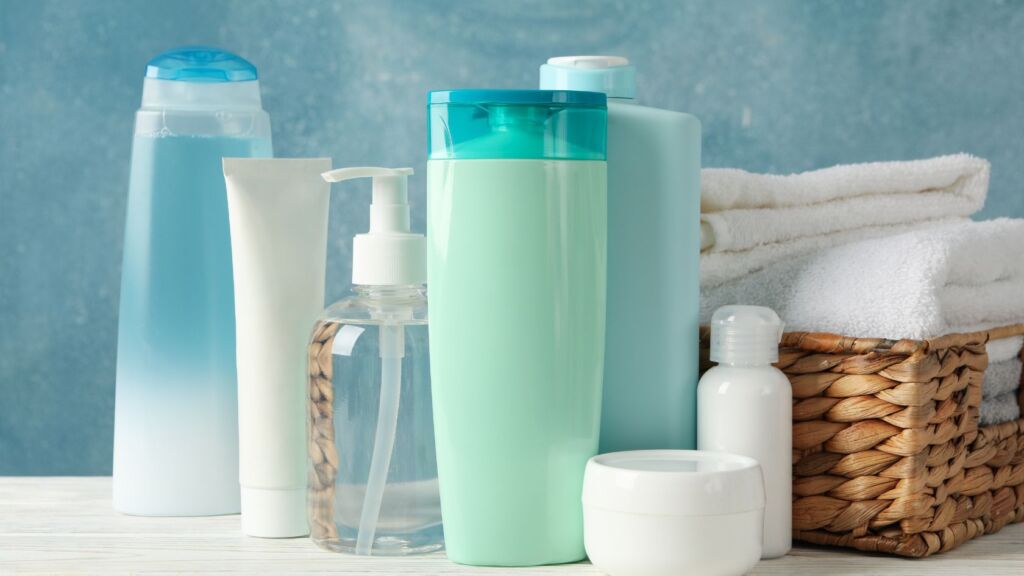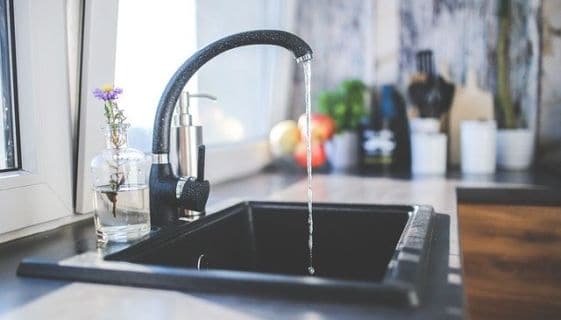Every day, most of us are unwittingly exposed to hundreds of chemicals, and most of these exposures do not come from industrial pollution. The point sources might surprise you: our perfumed deodorants and shampoos, shaving cream and body washes, hair straighteners and face powders, lipsticks and moisturizers, and, well, you get the idea.
Some of these personal care products and cosmetics contain chemicals that are potentially hazardous to humans. Thanks to consumer pressure, many companies have reduced their use of these chemicals in the last decade, but they are still commonly found in product formulations.
Except for the chemicals used to create fragrances, ingredients on personal care products (PCPs) are required to be listed on the label. But ingredient lists can be confusing. Chemical names may seem like another language, and to some degree, they are. Adding to the confusion, many chemicals have more than one name. Some PCPs can have over 50 ingredients listed. Yikes! What’s a conscious consumer to do?
To reduce your exposure to hazardous chemicals, it helps to be aware of several categories of ingredients commonly found in PCPs. Below, I’ve highlighted a few of the important ones for you to consider when making your purchases. (For the most comprehensive guidance concerning the hazardous ingredients in PCPs, I recommend the Environmental Working Group’s (EWG) Skin Deep Database.
Fragrance
We see the word “fragrance” on so many products–from shampoos to carpet shampoos, from garbage bags to laundry detergent, from cologne to candles. But what exactly is it? Fragrance is not just one chemical, but rather a combination of chemicals that create a distinct smell or scent. The FDA allows companies to keep their fragrance formulas secret, and simply include the words “fragrance” or “parfum” on labels. A single scent may consist of anywhere from 50 to 300 different chemicals! Of the nearly 4,000 chemicals approved for producing fragrance, very few have been thoroughly tested. Many are allergens or hormone-disrupting chemicals. Fragrance chemicals are derived from raw natural materials or from petroleum. Some of the chemicals in fragrance, like phthalates, are used to make the scent last a long time. The bottom line is, when you see the word “fragrance”, you have no idea what you are being exposed to. My advice: Avoid products that contain fragrance.
Endocrine Disrupting Chemicals
Endocrine-disrupting chemicals (EDCs) are chemicals that mimic natural hormones and by doing so, interfere with our natural hormone (or endocrine) systems. When absorbed, they can either increase or decrease normal hormone levels, which can cause changes to immunity, metabolism, puberty, fertility, and reproductive health.
EDCs do serve a function in personal care products. Some are stabilizers, preservatives, solvents, plasticizers, antibacterials, or UV blockers. With regard to PCPs, the most concerning chemicals are parabens, phthalates, benzophenones, and triclosan. Some of these are serious EDCs, so much so that Europe has banned 5 parabens (while the US has banned none).
Many PCP labels, such as shampoos or lotions, say ‘paraben-free’ or ‘free of parabens’ or ‘no parabens’ or ‘no phthalates’. That claim is driven by consumer awareness and demand that PCPs don’t contain harmful ingredients. But buyer beware – many manufacturers replace these better-known hazardous chemicals with less-well-known chemicals of equal concern. This is a process aptly called “regrettable substitution.” Unfortunately, it is almost impossible for a consumer to know if a regrettable substitution has been made. My advice: use databases and apps like EWG’s Skin Deep or Clearya to help you make safer purchases.
PFAS (perfluoroalkyl substances)
In recent news, PFASs, or “the forever chemicals”, are finally getting the attention they deserve. PFAS chemicals as a class are typically used for water- and stain-proofing. You might find PFASs in some cosmetics that are waterproof or water-resistant. Products such as lipstick, foundation, eye shadows, and mascara may be more likely to contain PFASs. Even though manufacturers have not used PFASs as an ingredient, testing shows that PFASs are in many PCPs, due to contamination. This makes doing your homework more complicated. My advice: avoid PCPs that claim to be waterproof or water-resistant, and stick with companies dedicated to using a few simple ingredients.
A few other personal care product ingredients to avoid are talc (which may contain asbestos), coal tar, and preservatives like BHA and BHT.
While exposure to unwanted ingredients in PCPs is mostly through the skin, exposure can also come from inhaling the VOCs (volatile organic compounds) released from PCPs while showering—a time when multiple PCPs are often used at the same time.
Figuring out which products are safest for you and your family can feel overwhelming, especially since many hazardous chemicals are not easy to identify. Some easy ways to avoid these chemicals are:
- Choose brands that are reliable and transparent. These are often companies dedicated to organic ingredients.
- Choose products with a short, simple ingredients list.
- Beware of “greenwashing”–products that claim to be free of this or that chemical. Remember, it’s more important to know what’s IN the product, than what’s not.
- Use apps to help you choose healthy products. We recommend:



 Deborah deMoulpied
Deborah deMoulpied 

